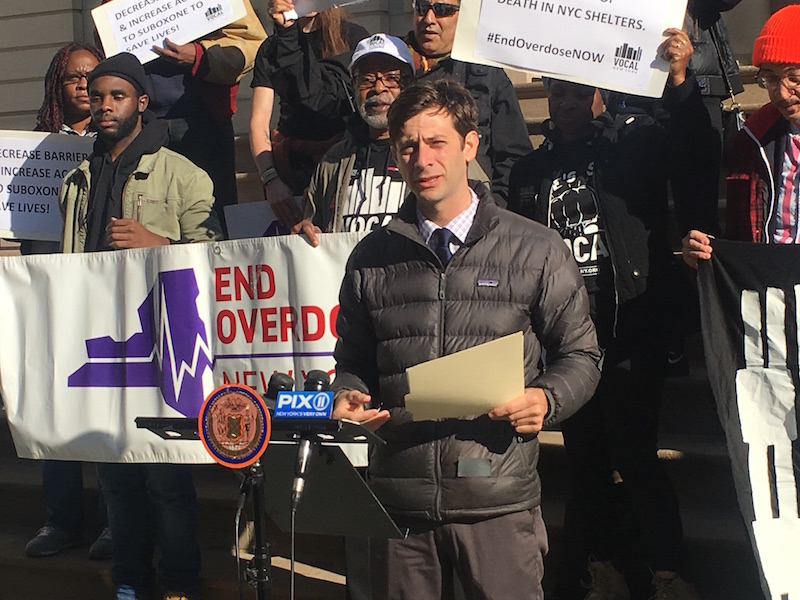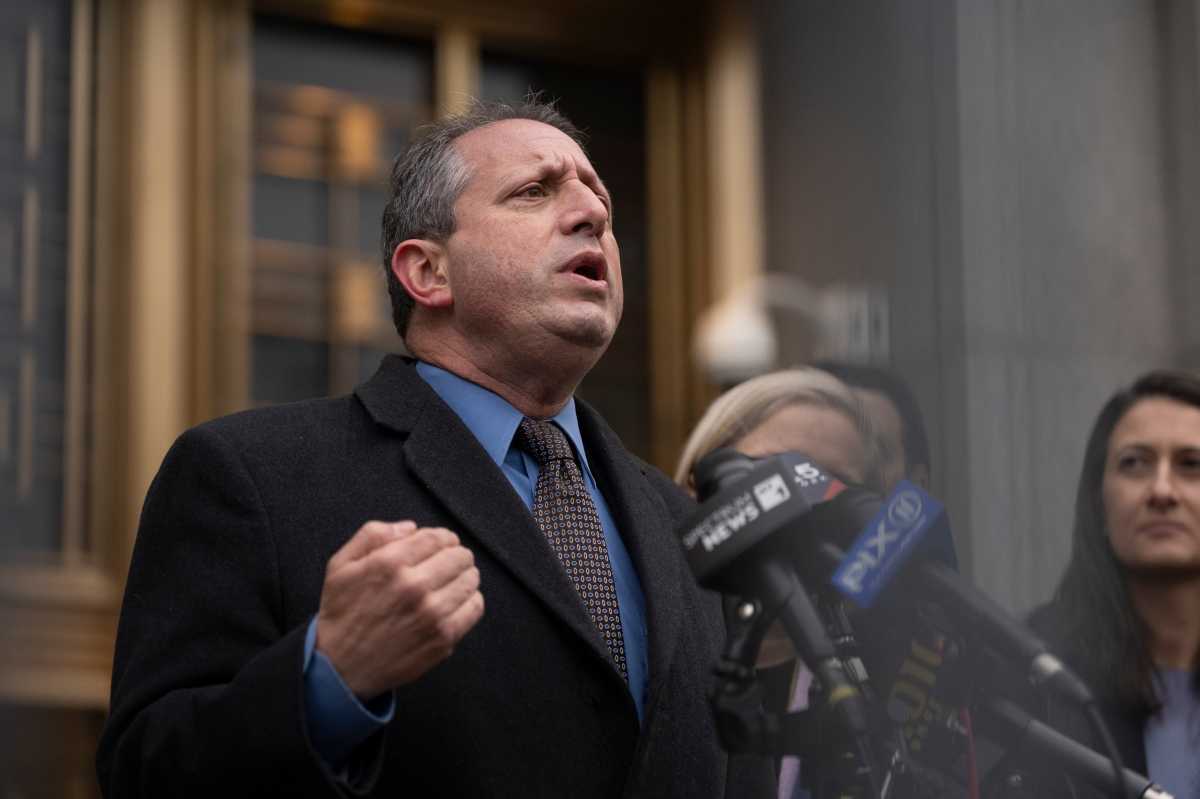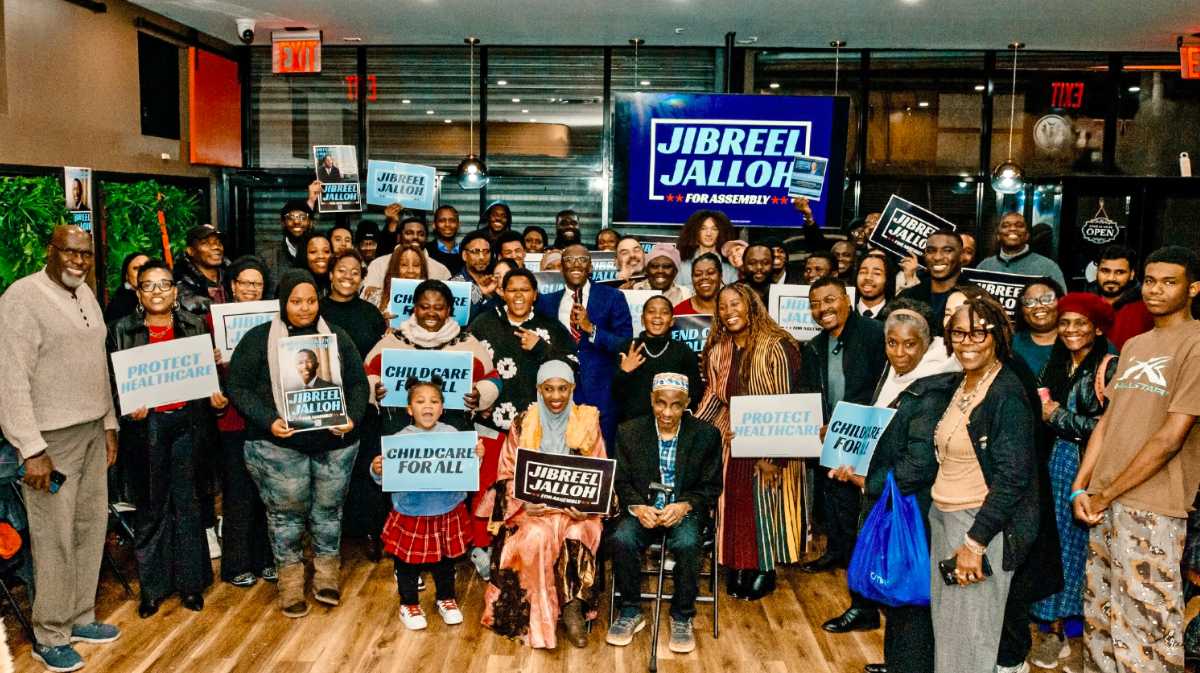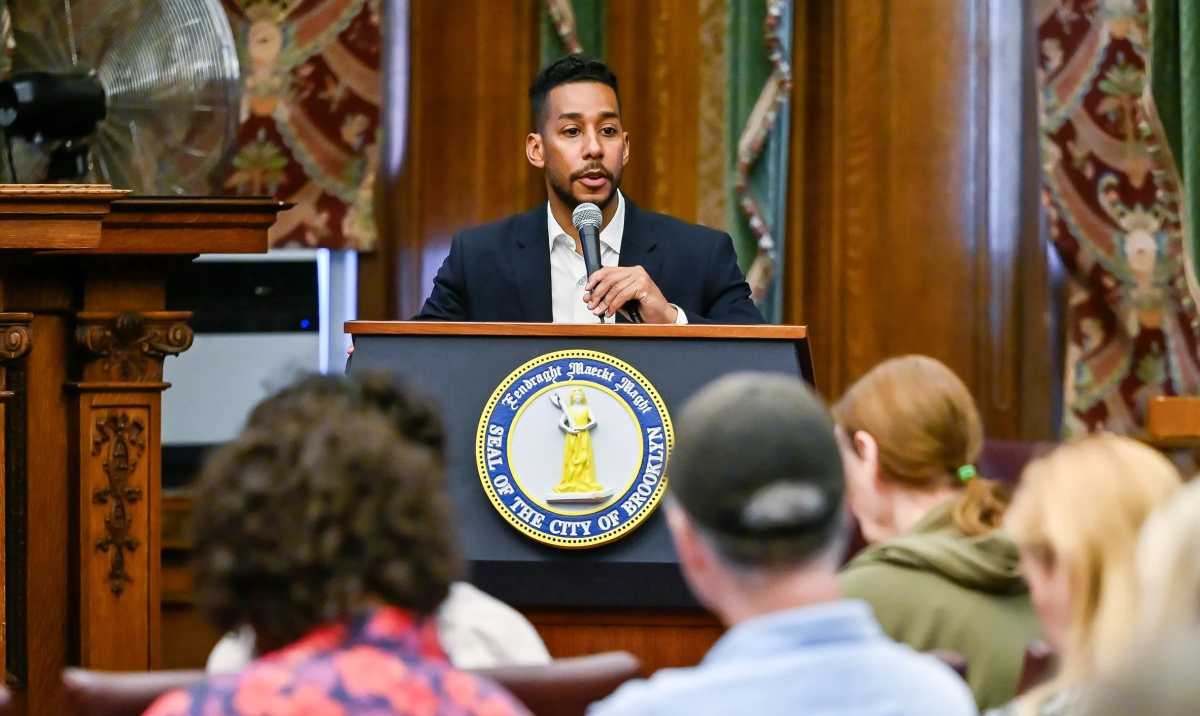City Councilman Stephen Levin (D-Williamsburg, Vinegar Hill, Brooklyn Heights, Carroll Gardens, Boerum Hill, Cobble Hill, DUMBO, and parts of Bedford-Stuyvesant, Clinton Hill, Greenpoint, Downtown Brooklyn, Gowanus, Park Slope) today introduced legislation to increase access to treatment of opioid addiction for residents of New York’s homeless shelters.
Groups that advocate for harm reduction, providers of homeless services, and activists committed to changing drug policy rallied on the steps of City Hall in favor of the bill, which would allow easier access to buprenophrine, a medication that assists opioid abusers in their recovery.
Opioid overdoses are the most common cause of death for homeless New Yorkers and have been the primary or secondary cause of death for those who live in shelters over the past decade.
In the past seven years alone, the opioid overdose rate has increased, with 1,487 residents of the city losing their lives to them in 2017 alone. The risk is higher among the city’s black, homeless, and poor populations.
Dr. Kimberly Sue of the Harm Reduction Coalition expressed outrage over these statistics, “It’s easier to get heroin or fentanyl than it is to get treatment,” she said. “It’s crazy.”
Still, Jeremy Saunders, Co-Director of VOCAL-NY, a community activist organization, told Kings County Politics that he is hopeful. “Last year, Councilmember [Ritchie] Torres took the first step by passing legislation to mandate NARCAN training inside shelters,” he said. “This year, Levin is taking the next step by mandating access to evidence-based drug treatment including methadone and buprenophrine.”

Levin made it clear that the city council is morally obligated to pass this legislation, as the city is currently “letting them down with no alternatives.” “We can’t continue to sit by and do nothing,” said Levin. “As we’ve seen in New York City and throughout the country, the status quo is not working. People are overdosing on opioids every day in New York City — more than homicides and traffic fatalities combined.”
Councilwoman Diana Ayala (D-Manhattan, Bronx) who co-sponsored the bill, agreed, calling the measure “common sense legislation.” “It’s all in our face, and we can’t avoid it,” she said. “Thousands should be trained to keep people alive. We should be smarter…and help users get help in the shelters.”
Shantae Owens, a community leader at VOCAL-NY, shared his past experiences with homelessness and drug abuse to highlight the need for this legislation. “I was in a shelter. I wanted to get out and be treated. I remember the agonizing pain while on the waiting list with no idea of when treatment would come,” he said. “That has to stop. It’s killing our youth and family members.”
Owens proceeded to call it “insane” that the police are in charge of enforcing existing drug laws, advocating for centers and harm reduction instead.
Kassandra Frederique, the New York State Director at the Drug Policy Alliance, saw the legislation as part of a bigger picture. “If you’re going to force people into shelters, you’re responsible for the health and to ensure they come out alive. It’s about dignity and respect,” she said, calling the overdose rate “abdication of responsibility of city officials.” “We must decide whether to save all lives or some.










